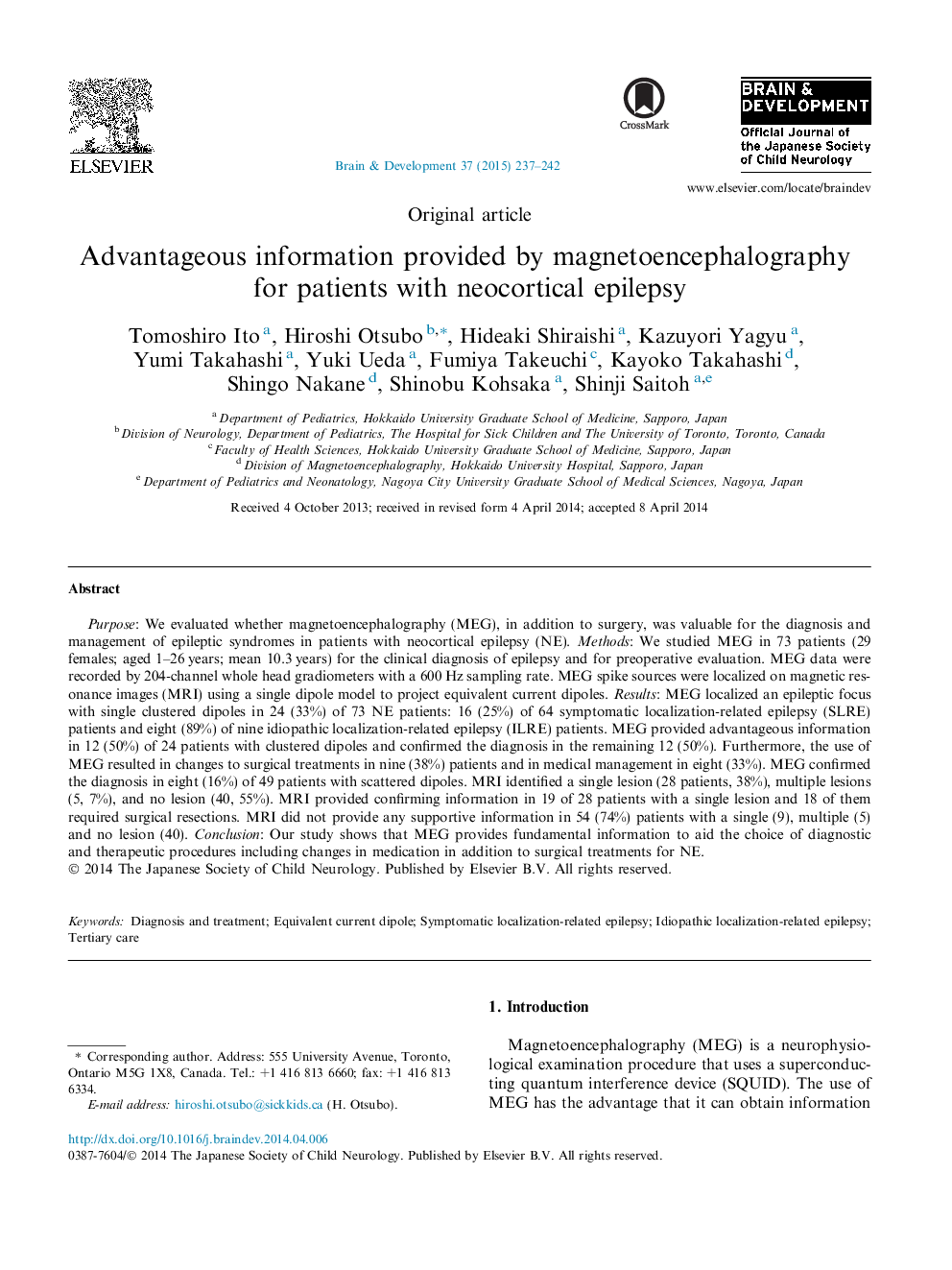| Article ID | Journal | Published Year | Pages | File Type |
|---|---|---|---|---|
| 3036808 | Brain and Development | 2015 | 6 Pages |
Purpose: We evaluated whether magnetoencephalography (MEG), in addition to surgery, was valuable for the diagnosis and management of epileptic syndromes in patients with neocortical epilepsy (NE). Methods: We studied MEG in 73 patients (29 females; aged 1–26 years; mean 10.3 years) for the clinical diagnosis of epilepsy and for preoperative evaluation. MEG data were recorded by 204-channel whole head gradiometers with a 600 Hz sampling rate. MEG spike sources were localized on magnetic resonance images (MRI) using a single dipole model to project equivalent current dipoles. Results: MEG localized an epileptic focus with single clustered dipoles in 24 (33%) of 73 NE patients: 16 (25%) of 64 symptomatic localization-related epilepsy (SLRE) patients and eight (89%) of nine idiopathic localization-related epilepsy (ILRE) patients. MEG provided advantageous information in 12 (50%) of 24 patients with clustered dipoles and confirmed the diagnosis in the remaining 12 (50%). Furthermore, the use of MEG resulted in changes to surgical treatments in nine (38%) patients and in medical management in eight (33%). MEG confirmed the diagnosis in eight (16%) of 49 patients with scattered dipoles. MRI identified a single lesion (28 patients, 38%), multiple lesions (5, 7%), and no lesion (40, 55%). MRI provided confirming information in 19 of 28 patients with a single lesion and 18 of them required surgical resections. MRI did not provide any supportive information in 54 (74%) patients with a single (9), multiple (5) and no lesion (40). Conclusion: Our study shows that MEG provides fundamental information to aid the choice of diagnostic and therapeutic procedures including changes in medication in addition to surgical treatments for NE.
